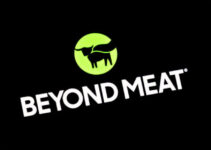Zara is a Spanish fast-fashion retail chain multinational company. Amancio Ortega and Rosalia Mera established the Spanish fashion company in 1975. Today, we’ll discuss Porter’s five forces of Zara; bargaining power of suppliers and buyers; threat of new entrants and substitute products and brands; and competitive rivalry in the Zara five forces analysis.
Porter’s five forces analysis of Zara would discuss the bargaining power of suppliers and buyers; threats of new entrants and substitute products and brands; and competitive rivalry in the Zara five forces analysis. Here’s Zara Porter’s five forces analysis as follows;
Porter’s Five Forces Analysis of Zara
Let’s discuss Porter’s five forces analysis of Zara and they’re as follows;
Bargaining Power of Suppliers of Zara
One of the strong traits of Zara is having a large network of worldwide suppliers and developing strong relationships with them. It allowed the company to gain a competitive edge and that’s why the bargaining power of suppliers of Zara is lower due to the worldwide influence of the retail fashion brand. However, many suppliers and vendors want to do business with established brands due to the consistent supply of orders. Some of the main factors that would impact the bargaining power of suppliers in the Zara five forces analysis are as follows;
I-Direct Transaction
Many big retail fashion brands are cutting down the intermediaries involved in the supply chain and distribution network. It allows them to optimize operational efficiency decrease costs and develop stronger and closer relationships with customers and business partners.
II-Limited Supplier Switching Cost
When it comes to choosing the suppliers, Zara has got a lot of options. There are various suppliers available in the global market, and they offer similar types of raw materials and supplies. The bigger company’s brand influence, large volume of orders, and long-term contracts and deals would provide a competitive edge in negotiation.
III-Similar Raw Material in Production
The suppliers offer almost the same type of raw materials and supplies for the production and manufacturing of clothes and apparel. It comprises of following supplies and materials;
- Manufacturing capabilities
- Packaging material
- Machinery
- Threads
- Textile dyes
- Fabric types
- Cotton
IV-A Lot of Suppliers
In order to decrease the risk factors, Zara deals with a lot of suppliers and vendors in the apparel and clothing industry. Some of them are local suppliers and the others are global; the company also outsources some of its production works.
Bargaining Power of Buyers of Zara
The availability of a lot of fashion brands in the clothing and apparel industry gives significant bargaining power to buyers and customers. Some of the main factors that would impact the bargaining power of buyers in the Zara five forces analysis are as follows;
I-Price Sensitivity
Price-conscious customers comprise a significant portion of the apparel and clothing market. It could be highly beneficial to the fashion brand Zara, but there are other brands that would precisely target the price-conscious customer market. In fact, there are some low-cost brands and they counterfeit the designs and styles of top brands.
II-Limited Brand Switching Cost
Customers and buyers could easily switch to other brands that offer them a little better price or features without thinking twice. When there is availability of lower cost and cheaper option; customers would definitely choose it. However, it is because of the easy availability of information and customers’ better-informed decisions.
III-Brand Alternative Availability
Customers have a higher bargaining power when they have a lot of alternative options available to them. Zara faces tough competition in various categories of clothing and apparel and they’re as follows;
- Formalwear
- Casualwear
- Sportswear
- Streetwear
Threat of New Entrants to Zara
The threat of new entrants in the fast fashion industry is moderate, but it is significant to be aware of the fast fashion trends and new market entry. Some of the factors that would impact threats of new entrants in the Zara five forces analysis are as follows;
I-Economies of Scale Reliance
The existing brands in the fashion apparel industry have got the competitive edge of economies of scale and it makes the new entrants threat moderate. Such brands have developed to become mega brands and have the capability to sustain the cost-benefit of scaling up operations like better supply chains and distribution networks.
II-Outsource Production
Outsourcing production and manufacturing operations would offer companies cost efficiencies. In fact, outsourcing offers you a lot of benefits if you are launching an online store or e-commerce platform in clothing.
III-Brand Awareness & Limited Loyalty
Traditionally speaking, brand equity and brand awareness play a key role when entering the clothes and apparel market. The growth of e-commerce platforms and online stores has decreased brand loyalty because customers are always looking for something new.
Threats of Substitute to Zara
Clothing and apparel is a highly broad and diverse market and it focuses on communicating the unique value proposition. Some of the main factors that would impact the substitute threat in Zara Porter’s five forces analysis are as follows;
I-Differentiation Across Brands
The top reason that customers go for the substitute brand or product is because of the differentiation features and unique value proposition. For instance, Shein and H&M offer affordable clothing; Nike and Adidas are the sportswear brands in the premium section.
II-Easy Market Information
The other factor that would amplify the customer switching rate towards the substitute brands and products is because of the easy availability of market information on other options. Customers would select the substitute products and brands depending on their needs and requirements.
III-Lower Brand Switching Cost
Zara offers affordable and low-priced fast fashion products in the clothes and apparel industry; it makes the substitute switching cost moderate to lower. On the other hand, other fast fashion brands are also offering affordable and cheaper options to customers. The presence of cheaper options in casualwear amplifies the risk of product or brand switching.
IV-Alternative Products & Brands
H&M and Shein are the top competitors of Zara in the streetwear and casualwear clothing category. Nike and Adidas are the top sportswear competitors; there are many other casualwear brands that offer relaxed and designed products to customers.
Competitive Rivalry of Zara
The competitive rivalry among apparel and clothing brands is very high; because various brands are competing in the same market and targeting a similar audience. Some of the main factors that would impact competitive rivalry in Zara Porter’s five forces analysis are as follows;
I-Aggressive Marketing
Leading brands in the clothing and apparel industry run aggressive marketing campaigns. In fact, they spend millions of dollars on their marketing and promotional campaigns; and focus on adding unique value propositions to gain a competitive edge in the market.
II-High Differentiation
Zara has successfully differentiated itself by offering semi-formal and formal types of clothing and apparel. H&M focuses on producing casualwear products for customers along with many other brands. Ralph Lauren, Lacoste, Adidas, and Nike are the top sportswear brands.
III-Limited Brand Loyalty
A vast majority of the customer market comprises of a lower middle-income and price-conscious customer market. They have limited loyalty to any brand and they are always looking for a better and affordable option, and it offers them huge bargaining power.
Conclusion: Zara Porter’s Five Forces Analysis
After an in-depth study of the Porter’s forces analysis of Zara; we have realized that Zara is the world’s leading retail fashion brand. If you are learning about the Zara five forces analysis; then you should keep in mind the abovementioned bargaining power of suppliers and buyers; threats of new entrants and substitute products and brands; and competitive rivalry.

Ahsan is an accomplished researcher and has a deep insight in worldly life affairs. He goes Live 3 days a week on various social media platforms. Other than research writing, he’s a very interesting person.


